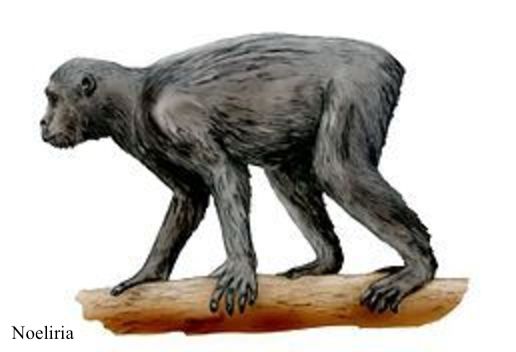Welcome to Afropithecus

Name Definition
African ape
Name Given By
Richard & Meave Leakey in 1986
Location
Afropithecus was found in a small site called Kalodirr in Kenya, Africa
Classification
Mammalia, Primates, Haplorhini, Simiiformes, Catarrhini, Hominoidea
Size
around 1.5 meters long
Temporal Range
Burdigalian stage of the Miocene epoch, around 18 million years ago
Ecological niche
small frugivore
Species/Sub Species
A. turkanensis
Diet
based on its dentition and thick enamel, most scientists suggest that Afropithecus ate hard fruits and seeds
Introduction
Afropithecus is an extinct genus of hominoid primates that lived in Kenya during the Miocene epoch. Afropithecus means “African ape” which references to the fact that it comes from Africa and is also a primate. Its species name, turkanensis, is named after Lake Turkana, a lake that is in the Kenyan Rift Valley in northern Kenya and is also near Kalodirr, the site where Afropithecus remains were found in 1986. Afropithecus is one of the more significant African Miocene apes and the current fossil finds attributed to Afropithecus have suggested that it shared some similar postcranial features to the famous Proconsul, while also sharing some cranial features with Aegyptopithecus, and because of its similar dentition, Leakey classified Hepliopithecus and Afropithecus as the same primate. While studies about its anatomy have been made, most of it has been focused on its dentition, especially the thickness of the enamel (enamel is the white covering of the crown of the tooth). Afropithecus’ enamel does vary in thickness over different parts of its mouth, but Afropithecus does have a relatively thick enamel covering. Since Afropithecus predates Kenyapithecus, the previous most oldest relatively thick enameled primate, has made Afropithecus the oldest primate with this kind of dentition. Combined with primitive facial features, Afropithecus is thought to have had a diet of hard fruits and seeds.